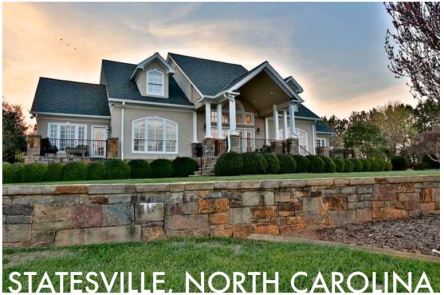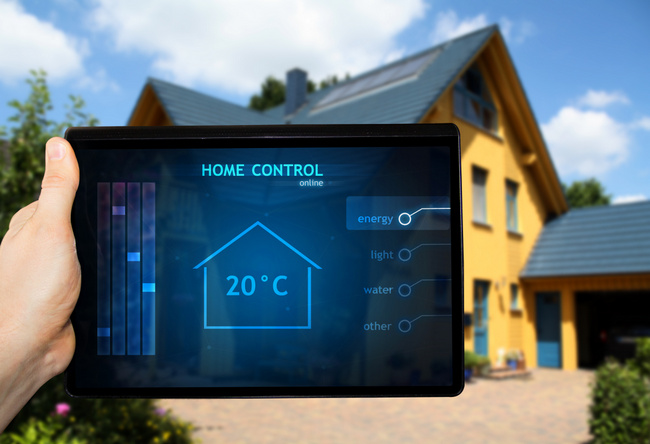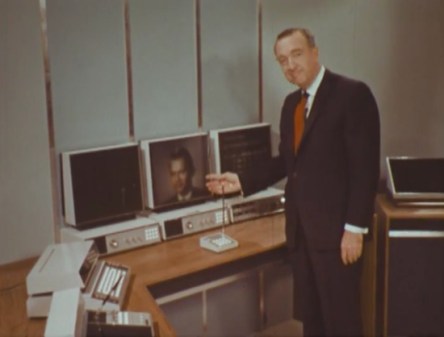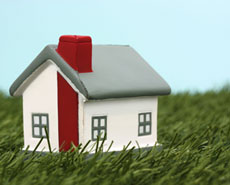Here at Point2, we help real estate agents market themselves and their properties. That means we spend a lot of time looking at listing photos. We’ve seen them all – the good, the bad and the truly incomprehensible. While we all know that evocative listing photos can promote a property by encouraging viewers to picture themselves living in the space, we can’t help but wonder: what if these millions of images that are being traded across the Internet by agents, owners and real estate portals could do even more? Don’t worry, this is not an article about the future of smell-o-vision. Instead we take a look at today’s smart photos to show you how a curbside snapshot can be so much more than just a pretty picture. Here are three new real estate marketing applications brought to you by advances in imaging technology. Share Locations What’s the first rule in real estate? Location, location, location. This is reason enough to geotag your listing photos. Geotagging is the practice of associating your images with a geographical location. Geotags tell your audience, and search engines, where a photo was taken. Geo-data makes it easy to add another layer of ‘searchability’ to your photos so consumers can find you based on a desirable location rather just than a desirable set of search criteria. With so many people using their mobile devices to find properties, geotags help them search for nearby homes more easily. Although most of today’s smartphones and digital cameras can add geotags to your photos automatically, real estate agents and brokers might want to check out RealtorCam, an iOS app that adds location and date information to your photos, plus easy custom captions. Viewers can see how great a house looks, where it’s located and...
YASC DC 2013 Recap
Pressing forward
As YASC DC 2013 draws to a close, clients depart with a greater understanding of what Yardi has to offer and much more. Longstanding clients connected with newcomers, providing mentorship opportunities and an unofficial forum for best practices. Clients connected with their Yardi contacts, building friendships and broadening lines of communication. Perhaps most importantly, though, clients from across the globe were able to give their feedback to Yardi developers, paving the way for products that are a reflection of clients’ needs. As one client participant told us during the conference: “I can’t reiterate how good it was to know that Yardi was listening to our suggestions and making changes to improve products. Does it get any better than making a good product better?” Yardi’s desire to listen and respond promotes better product development, but it also serves a greater purpose. Company receptivity builds client confidence. In turn, that confidence can result in the investments needed to trigger multiple facets of international business growth. This year’s conference experienced a 30 percent increase in attendance from 2012. It’s a glowing sign that businesses are gearing up for positive change and more efficient practices. As the economy recovers, multiple industries are seeing a surge in business, the long-awaited catalyst needed to propel growth. YASC has helped Yardi’s clients prepare for that wave of change and the success that follows in its wake. Across all of our diverse product lines, Yardi software prepares clients to press forward with the confidence that they need to ensure wise investments, adequate planning, and effortless organization across all levels. The fully integrated and highly configurable products take an individualized approach to business growth. This year, managing that growth has become easier than ever. Embracing the mobile age, clients are furnished with the...
YASC DC Day Two
Prepping for progress
Changes and updates are on the horizon for many Yardi verticals. Many of today’s sessions prepared attendees for software updates and industry changes that will affect the way that they do business. Voyager 6 to 7S: A small step forward with many benefits With excitement brewing about the recent release of Yardi Voyager 7S, many YASC attendees were interested in learning the differences between Voyager 7S and its predecessor, Voyager 6. While it will not be a jolting conversion for most clients, there were several key changes that make the user experience more efficient and pleasurable. Project Manager Ami Kerns walked class participants through the highlights. -Users now have a new menu search bar, Favorites and History at their fingertips -Designated users can search the back end of the database, making most objects and columns searchable. -Search results now appear on a tidy pop-up window that doesn’t interfere with information and menus displayed on the page initially views. Users may now navigate through multiple screens at the same time without access to Ctrl+N—which is excellent for on tablets and devices without Control features -Voyager 6 has been rewritten using .NET, creating convenient tabs and links for features that users utilize most -Designated users may gain access to posted batches and edit their details -PayScan 12.1 is compatible with 7S display type securities -7S allows users to enter multiple tax values for one object, then have those tax values auto-populate according to the specific GL account, expense account, or the payable account -Users can customize how payments are divided -Prepayments can be made on a non-zero receipt and multiple pre-pays can be issued on a single receipt batch -Periodic invoicing available with customizable fields Getting Revved-up for HUD Updates “Does everyone have all of the...
Most Valuable Homes
Data from Point2Homes
Is your home valued at more than $1 million? Chances are, you live in California .. or maybe New York. A real estate data analyze from Point2Homes revealed that over 2.5 million Americans own homes worth more than $1 million. California and New York are home to many of these residences – in fact, 800,000 of the million dollar dwellings are in the Golden State. With real estate prices that have already rebounded post-recession, any Californian knows that owning a home valued at $1 million may not mean you consider yourself a millionaire. See maps of the states with the highest property values, and find out where the priciest real estate is located, on...
Evolving E-Commerce
Impact on real estate
Today’s retail market is something of a “living” sector, seemingly in a state of constant change as manufacturers and retailers learn to harness ever-advancing technology to attract and retain customers. Over the years, advancements have led to a variety of concerns, some of them significant: The growing popularity of online shopping has at various times fanned real estate owners’ fears that demand for bricks and mortar would wane. Retailers have feared a loss of turf to e-tailers, in particular Amazon and other mega-players. Consumers have feared invasion of privacy as their preferences are recorded and targeted in minute detail. All are valid concerns. But like any advancement, over time technology has also brought brand awareness, better customer service, greater convenience—even a competitive edge. And the refinements keep coming. As the speed of e-commerce increases, the types of technology needed to meet higher expectations grows ever more complex. Same-day delivery of consumer and business goods is one new wrinkle. Once limited to local delivery in big cities (Barnes & Noble has long offered the service in New York City, for instance), this trend promises to spread in the not-so-distant future. But with volume and distance come complications: Extending the reach and volume of same-day service demands new types of machinery and new sorting capabilities—and that presents a challenge not just for the machine manufacturers and logistics providers but for the property owners, as well. In fact, the new machinery requires a variety of changes in space: more complex internal layouts and technical capabilities to accommodate the machinery; larger mezzanine areas with higher clearance for packaging and other back-office tasks; greater life-system components ranging from lighting to HVAC to parking to fire protection because of an increased employee presence. The warehouses, though necessarily more locally based...
Wired Home
The Rise of Automation
Imagine driving up to your house after a long day of work. The garage door opens without touching a button. The front door unlocks – no need to fumble around for your keys – and the lights flip on. Your TV tunes to your favorite channel before you even take off your coat. Is this a dream? No. Welcome to your automated home. Home Automation Past & Present Home automation became accessible in the late 1970’s when X10 technology was made available to the American public. X10 modules allow compatible electronics to communicate via existing power lines in a house. Although X10 is relatively affordable, it is also somewhat complicated and time consuming to install. Home automation in the early days largely remained the pursuit of techy hobbyists and wealthy homeowners. Today’s widespread smartphone and tablet technology has now opened up home automation to a broader audience. Some companies are offering devices that allow users to control a single function wirelessly or automate it all together. The Nest Learning Thermostat is a smart thermostat that connects to Wi-Fi, allowing it to be controlled remotely using a mobile app. You can adjust the temperature of your home from anywhere. Additionally, Nest learns your climate preferences and creates a schedule that optimizes your energy use. Nest even knows when you’re out of the house and self-adjusts to save power. Other forward-thinking businesses are offering more comprehensive home automation services. Comcast, a national media and technology company, touts their XFINITY® Home package as “the total home security and home control solution that keeps you connected to what matters most.” For less than $50 a month, XFINITY® Home allows you to control your security system, adjust your lighting and access your thermostat from your smartphone, tablet or computer. Better still, you can program integrated automated systems to work together. For example you can tell your home to turn down the heat when you arm the alarm, giving you one less thing to worry about when you walk out the door in the morning. Automation Benefits for Tenants & Landlords Home automation isn’t just a good idea, it’s also a green idea. Automation yields multiple benefits, chief among them being the energy efficiency that comes with having a well-regulated HVAC system. Studies show that building automation can result in consistent energy savings between 5% and 15%. Boost savings by adding automated occupancy sensors to switch off appliances that have accidentally been left on to reduce unintentional energy usage. Additional benefits of home automation include convenience, peace of mind and ease. You can manage your home from anywhere, check your security feed at any time and turn on the lights from your iPad without having to bump around in the dark. There is even home automation technology that will help you take care of your pet. Home automation is more than just a passing trend. It’s the future of real estate. A recent Better Homes and Gardens Real Estate survey revealed that 41% of Millennials would be more likely to brag to a friend about a home automation system than a renovated kitchen. Residential complexes can enjoy significant energy savings and other perks from automation. Automated units are in demand and can be marketed as “smart homes” that enjoy technologically advanced features and added security. In fact, the value of the smart home market is estimated to climb to $60 billion by the year 2017. Home automation “future proofs” your properties, ensuring a steadily increasing listing value for years to come. Ready to try your hand at a little recreational home automation? Here are ten DIY projects to get you started. Editors’ note: Geneva Ives is the marketing writer for Point2, a leading provider of online marketing solutions for real estate professionals, including custom websites, syndication tools and prospecting utilities. She will be contributing technology-oriented real estate interest posts to The Balance...
The Future Is Now
According to Walter Cronkite
Editors’ note: Geneva Ives is the marketing writer for Point2, a leading provider of online marketing solutions for real estate professionals, including custom websites, syndication tools and prospecting utilities. She will be contributing technology-oriented real estate interest posts to The Balance Sheet. It’s no secret that the team at Point2 is a little home obsessed. We’ve been providing real estate marketing services for over a decade now; it’s fair to say we’ve seen a lot of properties (and housing trends) in that time. We recently encountered this house-centric blog post on Smithsonian.com that features video clips from the long-canceled CBS weekly documentary program entitled “The 21st Century.” The episode in question originally premiered on March 12, 1967. In it our host, legendary news anchor Walter Cronkite, escorts us around a vision of the single family home in the year 2001. Modern marvels abound – inflatable furniture, multicolored plastics, illuminated speakers. It’s a wonderland inspired by rapid advances in technology. That got us thinking: holy moly, the future is now! Decades past had such high aspirations for the year 2000 and beyond. Are we living up to the hype? To address this question, we decided to take a look at three specific rooms in the homes of today. How do they compare to their counterparts in homes of the 1960s? And how do they compare and contrast with the futuristic visions previewed by Mr. Cronkite? The Kitchen 1960s Trends: According to back issues of House Beautiful, contemporary eat-in kitchens celebrated saturated colors and wood cabinetry. 21st Century Predictions: The CBS writers of the day posited that we would enjoy irradiated foods, automated meal preparation and dishes that are molded on the spot in the 21st century. Clean up would be a snap. Dirty plates, complete...
The Shrinking House
Smaller is smarter
For Ryan Mitchell, the attraction of small-sized living hit home after a layoff. Despite an advanced degree and strong performance reviews, the Charlotte, N.C. man lost his job as a corporate recruiting consultant in 2008 due to the economic downturn, learning abruptly that “a job isn’t always a guaranteed thing, even if you’re a hard worker,” he said. The aftermath of the layoff led Mitchell not just to change his career path, but to reconsider how he’d live his life in the future. Now 27, the New Hampshire native works in non-profits, runs a successful blog, The Tiny Life, that focuses on small space living, and is about to custom build his own tiny house, which will be mobile. Immersing himself in the growing discussion and dialogue around living smaller and smarter has been eye-opening for Mitchell, and has revealed that he’s not the only one who wants to downsize. With a new job in the non-profit sector, he’s been saving up to build a house with a utility trailer as its foundation, so that in the future he can move anywhere for work if needed. He’s found that many of the visitors joining the discussion on The Tiny Life are retirees or soon to be retirees who are trying to figure out how to stretch their savings and retirement funds further. “Even if they have weathered the economic storm, they may have not saved enough, and life expectancy is so much longer now that money has to last longer. Retirees are trying to wrap their head around the question: ‘How am I going to have a good retirement with the money I have available and still have good quality of life?’” said Mitchell, whose highly-trafficked blog gets attention from around the world. One...
A Truly Tiny Apartment...
Living in 105 square feet
Take an average sized apartment and reduce it by 90 percent. Could you live there? With all the buzz in the news lately about micro-sized apartment living – particularly in markets like New York and San Francisco, where space is limited and renters will pay top dollar for even a closet-sized space to call home – we wanted to get the inside scoop. Literally, what is it really like to live in a teeny, tiny, itsy bitsy apartment? Is it sustainable? Does it drive you crazy? So we found Genevieve Shuler, who calls herself the Small Space Savant, to get our questions answered. For the last eight years, she’s called a 105 square foot “studio” in New York’s Greenwich Village her home sweet, albeit very small, home. Genevieve is a regular gal who like most of us owns a few extra pairs of shoes and loves her cat. She’s managed to make her micro living situation work with a few creative adaptations, like washing her dishes in the shower. Read on to find out more about how she functions in her pint-sized apartment. It’s inspiring insight for simplifying your life. She’s become a creative organization expert, even helping her friends and strangers create solutions for their own small spaces. TBS: What adaptations have you made to your life to make life in such a small space viable? GS: The biggest adaptation I’ve made in my life to make my small space work, is doing my dishes in the shower! I don’t have a kitchen sink, and my bathroom sink is too small to be practical for washing dishes, so my mother came up with the idea for me to do them in the shower. I have a corner shower caddy rack with those triangle...
Size Matters
Would you choose mansion or mini?
Imagine you’re on a game show – call it Real Estate Jeopardy – and have just been awarded a brand new home. The two prizes are behind unmarked doors – all you have to do is choose. (Drum roll please.) Behind door No. 1, you’ll find: A mansion modeled on the French Palace of Versailles. Located in Florida, this is the home featured on the film “Queen of Versailles,” which featured the Florida homes’ current owners, David and Jackie Siegel, and their opulent taste in size and design. It’s current on the market for $75 million – as is, unfinished – or $100 million, a price tag that includes finishing everything up before you move in. Take a look around on the house’s official sales video tour: Behind door No. 2., we have another residence that’s been in the news recently: an apartment that’s no bigger than a suite-sized hotel room. Maxing out at 300 square feet and being heralded as the solution for space-crunched cities like New York and San Francisco, micro-apartments are geared toward young professionals who want to work and play out in the city, not entertain at home. They’ll have a kitchenette, teeny-tiny bathroom, convertible furnishings and minimal storage space. Renters or owners will be simplifying their lives – and jettisoning possessions – before they move in. Some of these units are inspired by Airstream trailers, which define efficient mobile living. A look: The two extreme styles of living say a lot about America’s transition into a new housing economy. The Siegels had to stop work on their home due to the financial crisis, which made completing a 90,000 square foot place that has 10 Segways on site to get around a little less than feasible, even for a billionaire....
America’s Changing Face...
Demographic trends
America today is a veritable melting pot of demographic trends. The first Baby Boomers have arrived at senior citizen status. The population’s balance is shifting, with the historical white majority on its way to becoming the minority, while certain minorities are on their way to becoming the majority through a combination of organic growth and immigration. A huge pool of new graduates is pouring into the market. And urban centers are exploding at the expense of the suburbs. While this flood of significant shifts is impacting virtually every property type, perhaps none is more influenced than the retail sector. Successful retailing requires layering preferences, price points and geographic placement—and tracking how these are changing to better address them with the right offerings in the right locations. Complicating this targeted planning is the growing influence of technology, in particular the competition from online retailing—so-called etailing. Retailers and retail real estate owners alike are striving to sort through all this to make the best decisions, and the array of data available to them continues to grow. Arguably, they are getting ever better at following it, although not perfectly—after all, while a variety of new retail concepts have come out, over-retailing continues to impede the industry, only to result in shutdowns and bankruptcies during lean years, as has occurred in especially large numbers during the most recent recession. There is still room, however, to pursue new opportunities, and some interesting ones are emerging. Take, for instance, the potential in the generation now crossing the retirement threshold. While retailers are generally focused on younger shoppers, drawn by their huge numbers and propensity to develop brand loyalty, older Baby Boomers actually constitute a better option, according to Nielsen Co. data. Per capita, their average expenditures are noticeably higher—at $25,952...











